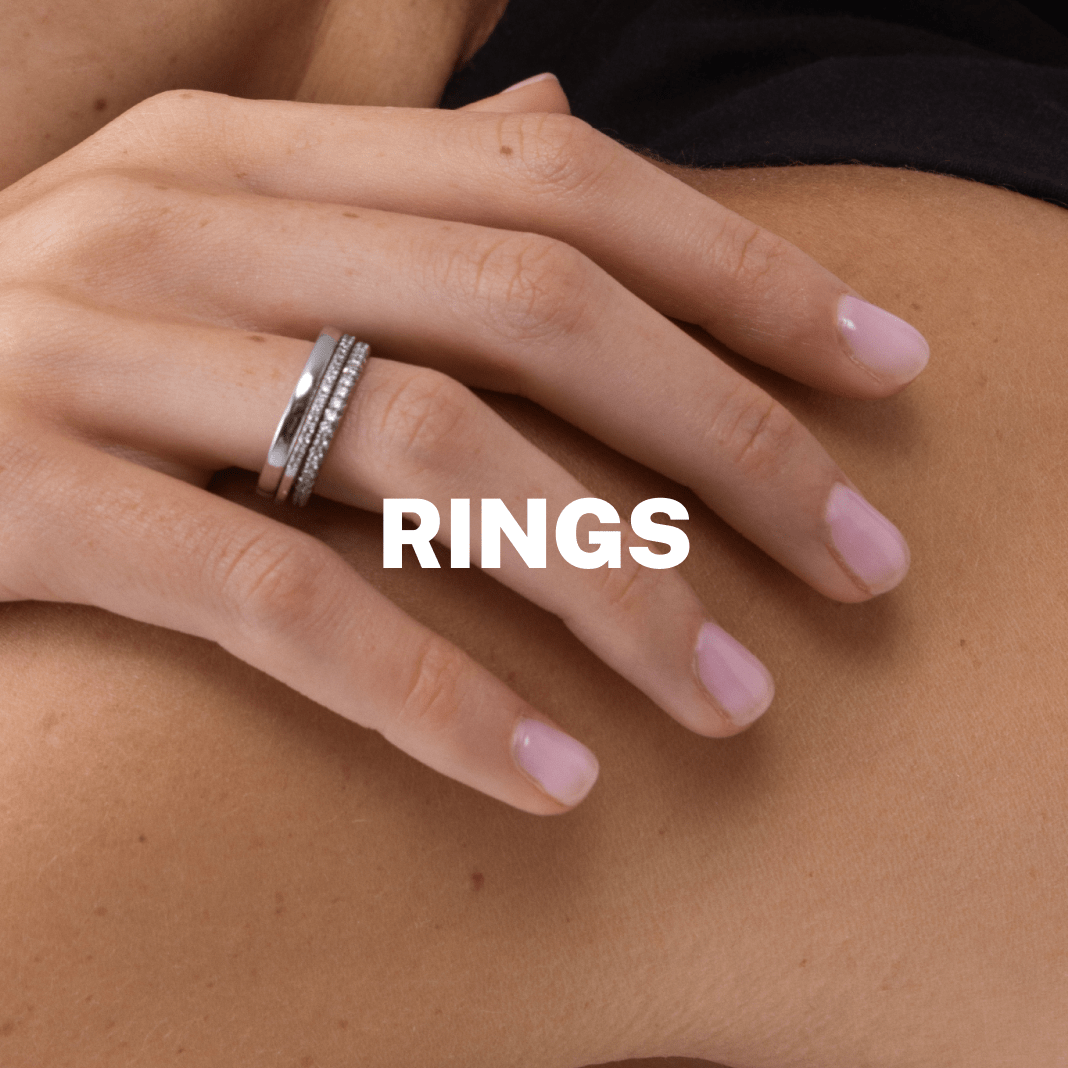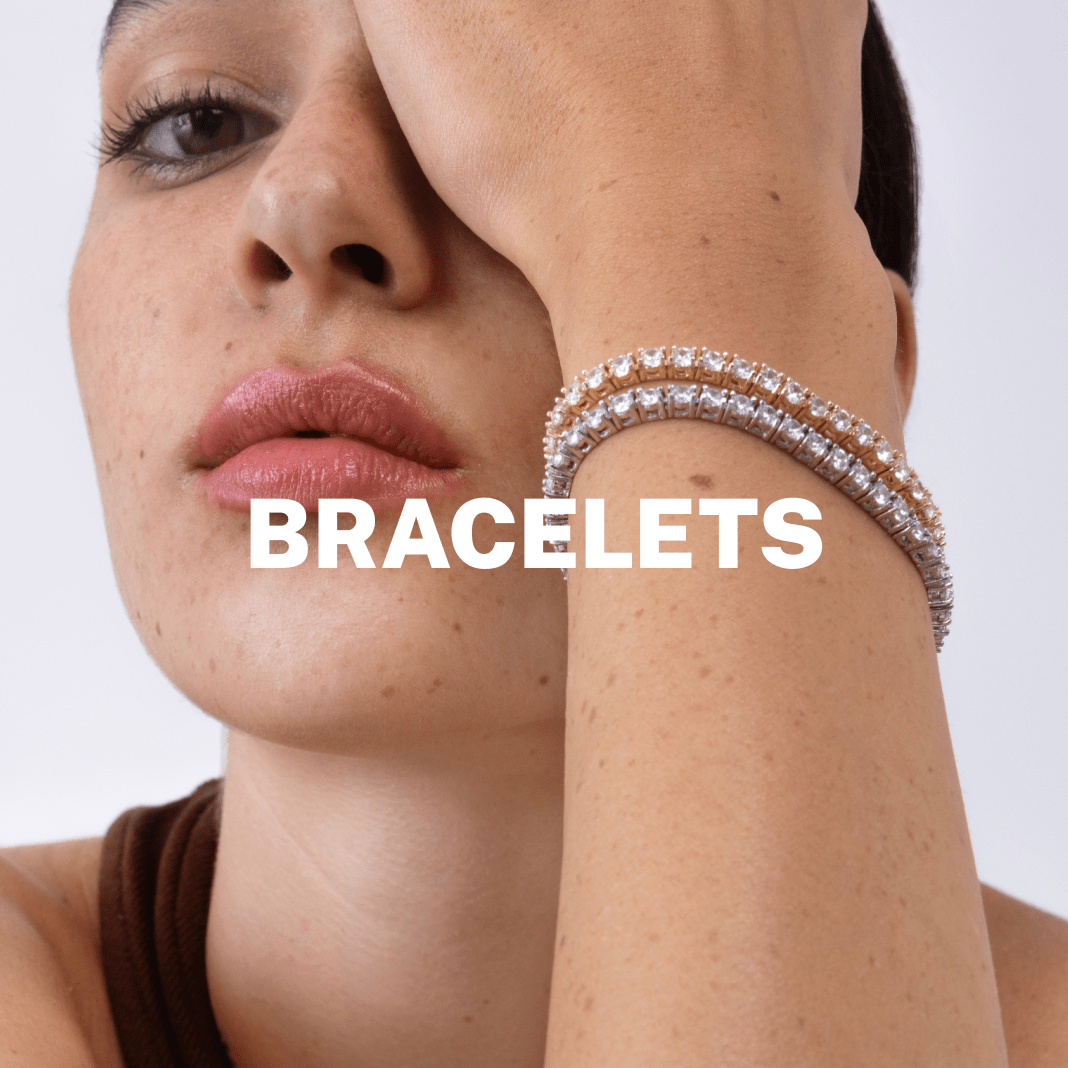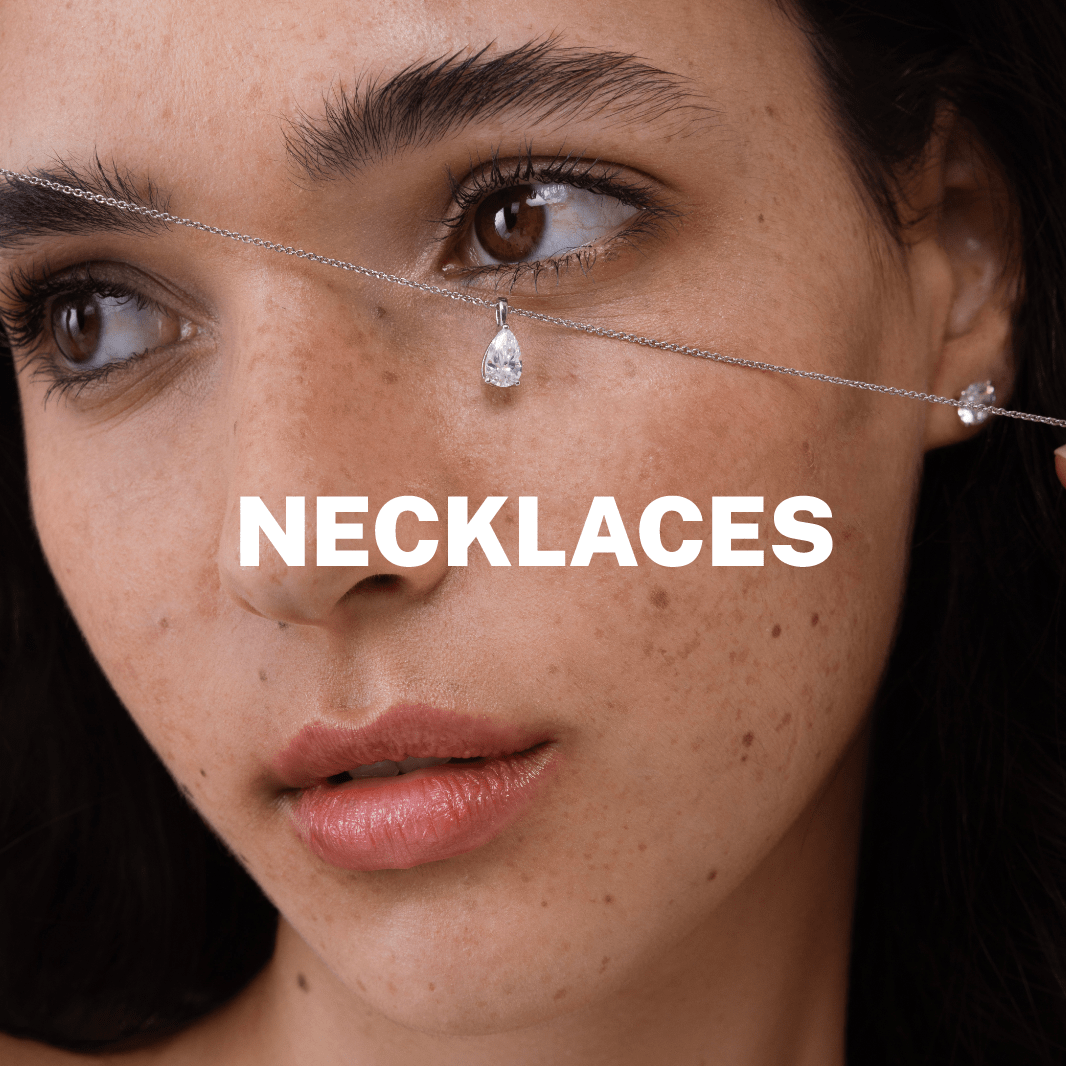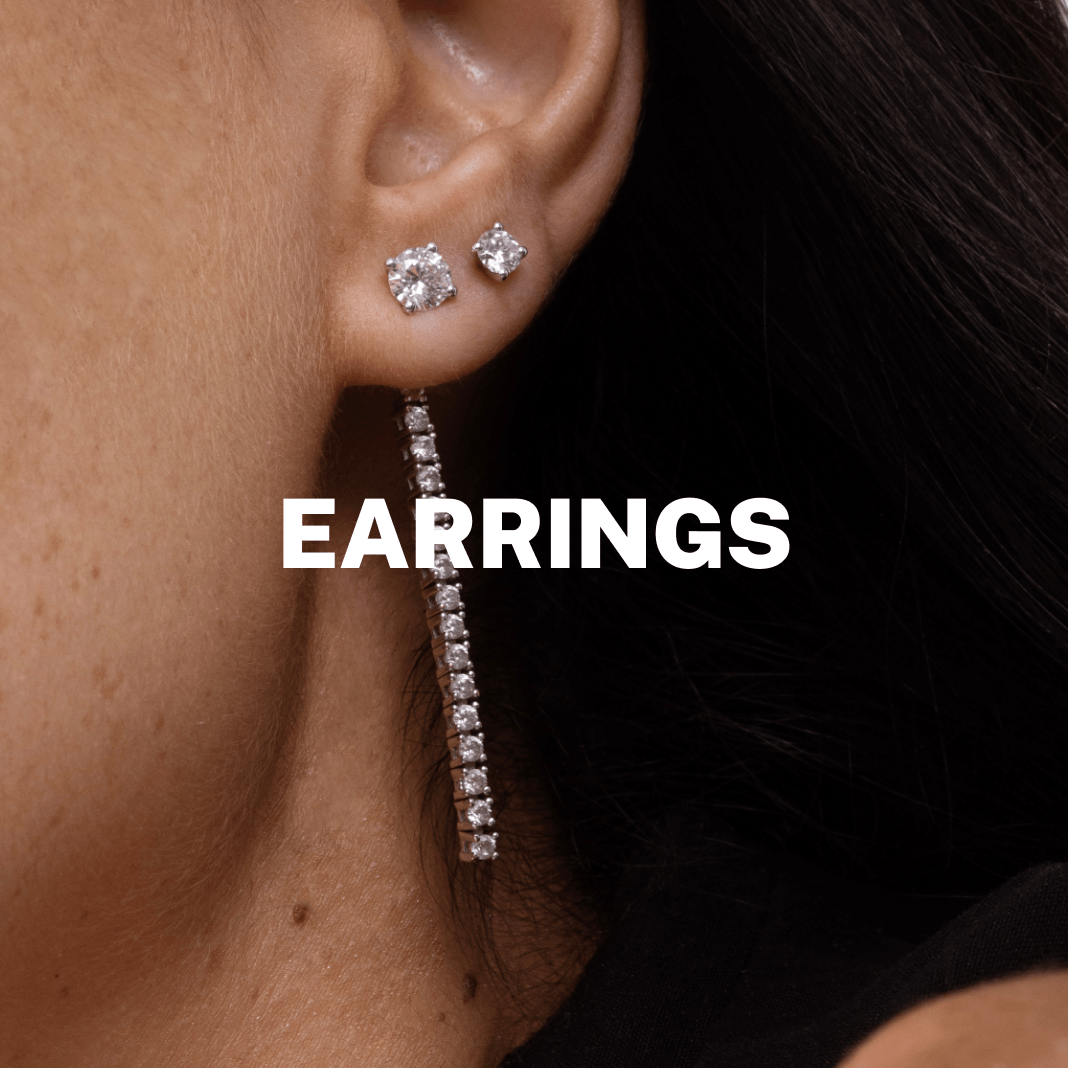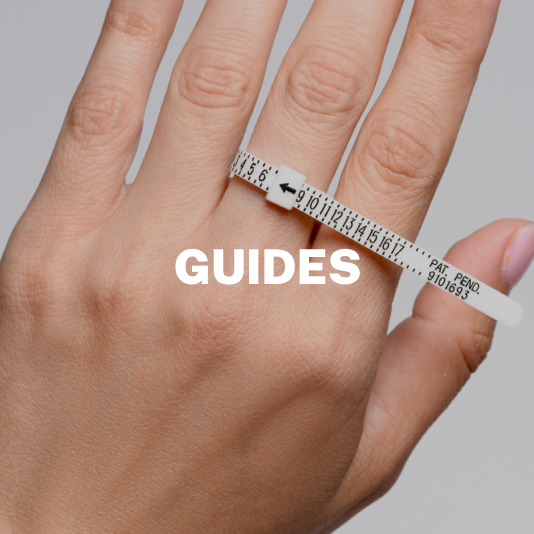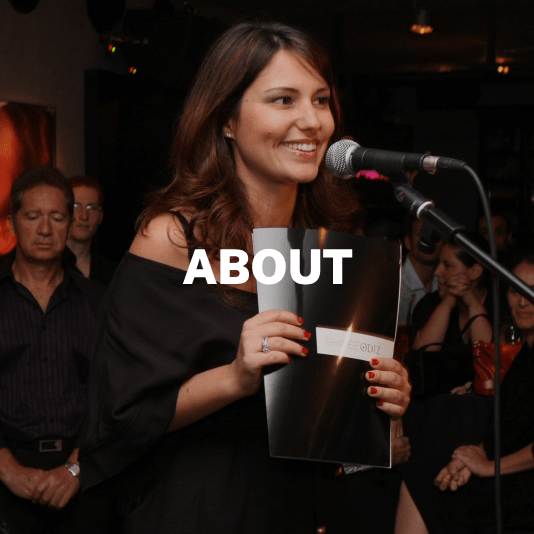


צבע יהלום
צבע יהלום הוא אחד המאפיינים הבולטים לעין, והוא קל מאוד להבנה בהשוואה ליתר ה-C's (קראט, חיתוך וניקיון). עם זאת, לצד טווח הצבעים המוצג מעלה, הוא מציג הבדלים עדינים מאוד בין צבעי היהלום השונים. כאשר יהלום משובץ בתכשיט, מאוד קשה להבחין בהבדל בין יהלומים חסרי צבע ברמות D-F או כמעט חסרי צבע ברמות G-J.

הטבלה המופיעה מעלה היא טבלת צבעי יהלומים לבנים. אם תרצו לראות טבלת צבע עבור יהלומים צבעוניים- גללו מטה.
טבלת צבע יהלום
|
דירוג |
צבע |
תיאור |
*כלל אצבע |
השפעה על המחיר |
|
D |
נטול צבע |
הצבע הנדיר והטוב ביותר. חסר צבע לחלוטין, כמו קרח לבן. |
כאשר אתם מחפשים יהלום פרימיום עם דירוג הצבע הטוב ביותר גם על הנייר וגם בתאורת מעבדה. מומלץ כאשר מחפשים מראה נוצץ וקר במיוחד. |
מעלה ב-25-100% |
|
E |
נטול צבע |
תחת תנאי מעבדה מחמירים ובהשוואה ליהלום בדירוג D ליהלום E יהיה גוון חיוור מאוד של צבע. |
איכות ברמה גבוהה במיוחד וזהה לדירוג D כאשר משובצת בתכשיט. |
מעלה ב-20-60% |
|
F |
נטול צבע |
תחת תנאי מעבדה מחמירים ובהשוואה ליהלום D או E ליהלום F יהיה גוון חיוור מאוד של צבע. |
יהלום בדירוג חסר צבע אך ללא קפיצת מחיר משמעותית כמו ביהלומים מדירוג D או E. |
מעלה ב-10-40% |
|
G |
כמעט נטול צבע |
כאשר משובץ בתכשיט או נבחן תחת אור רגיל, יהלום G יראה כמעט זהה ליהלום ברמות חסרות צבע. |
היהלום הקרוב ביותר לדירוג חסר צבע, אך ללא תג המחיר הגבוה. |
מעלה ב-5-20% |
|
H |
כמעט נטול צבע |
דומה מאוד ליהלום בדירוג G. יהלום H יראה לבן כמעט זווית, גם ביהלומים גדולים יותר. |
תמורה נהדרת למחיר, יהלומים בצבע לבן בכל סוגי התכשיטים ובתאורה רגילה. מומלצים בעיקר כאשר מחפשים איכות גבוהה ואסתטיקה, בלי לשלם על הבדלים שלא ניכרים לעין. |
ממוצע |
|
I |
כמעט נטול צבע |
גם כאשר הוא משובץ במתכות לבנות כמו פלטינה וזהב לבן- יהלום I לא יציג הבדל או ניגודיות בצבע. |
לבן חמים יותר אך ללא הבדלי צבע נראים לעין, אלא בהשוואה לצד יהלום בדירוג גבוה יותר. |
מוריד ב-10-15% |
|
J |
כמעט נטול צבע |
ממבט על יהלום J יראה לבן, אך עלול להציג רמיזות קטנות של צבע, בעיקר ממבט צידי. |
מושלם בעבור יהלום במראה לבן אך במחיר נוח לכיס, בעיקר אם משובץ בזהב צהוב או ורוד. |
מוריד ב-20-30% |
|
K |
גוון צהוב בהיר מאוד |
ליהלומי K יש גוון חיוור של צבע כאשר בוחנים אותם מכל הצדדים. מומלצים לזהב צהוב או ורוד. |
לא מומלץ לשילוב עם מתכות לבנות כמו פלטינה או זהב לבן. יהלומים קטנים יכולים להיות משובצים לצד צבע תואם כדי לא ליצור גווני יהלום מנוגדים. |
מוריד ב-30-40% |
|
L-Z |
גוון צהוב |
בעלי גוון מובהק המזכיר צהוב או חום בהיר. |
למראה אלטרנטיבי ואקזוטי או יוקרתי יותר. לא מומלץ אלא אם תרצו לראות את הצבע. |
מוריד ב-40-60% |
דירוג הצבע הסטנדרטי שאנו מציעים הוא F-G / VS-SI.
מדובר ביהלומים שנבחרו בקפידה באופן ידני בכדי להבטיח שיהיו חסרי צבע, בוהקים במיוחד ובמראה מושלם לעין העירומה בעבור כל צורה, גודל או תכשיט.
צבע היהלום "הטוב ביותר"
צבע היהלום הטוב ביותר בטווח הצבעים הוא דירוג D, אך הוא לא בהכרח יהיה הצבע המתאים ביותר בעבור התכשיט שלכם- יש מספר קווים מנחים שיכול להשפיע על הצבע הנכון ביותר ליהלום שאתם מחפשים:
קראט
ככל שהיהלום גדול יותר, כך הצבע שבוא בולט יותר לעין וכן דירוג הצבע בא יותר לידי ביטוי. באותה נשימה, הבדל המחירים גם הוא משמעותי יותר. ברוב המקרים, מדירוג H-I ומעלה, מומלץ להשקיע ביתר ה-C's כדי לשדרג את היהלום (למשל לבחור ברמת חיתוך, קראט או ניקיון גבוהה יותר).
מתכת
כאשר בוחרים צבע יהלום בעבור זהב לבן או פלטינה, אנו ממליצים לבחור בדירוג H-I לפחות. בעבור זהב צהוב או רוז גולד, אין בעיה לרדת בסולם הדרגות גם ליהלומים בדירוג J-K ועדיין לקבל מראה של יהלום לבן.
צורה
בחלק מצורות היהלומים יכולים להופיע יותר גווני צבע מאחרות. למשל, יהלומים בצורת אגס, לב או מרקיזה ידגישו גוונים כהים יותר בצוות המחודדים שלהם, בעוד יהלומים אובאליים, בחיתוך רדיאנט או קושאן נוטים להדגיש את גווני הצבע יותר מיהלומים עגולים או בחיתוך פרינסס.
שיבוץ
אם שיבוץ היהלום חשוף מהצדדים, אולי תרצו לכוון לדירוג גבוה יותר- שכן צידי היהלום נוטים להדגיש יותר צבע מאשר ממבט על. אם שיבוץ התכשיט שלכם כולל יהלומים קטנים, הקפידו לבחור ביהלום באותו דירוג צבע (חסר צבע, כמעט חסר צבע או צהוב) בהתאם, כדי למנוע מראה מנוגד ולא אחיד.
יהלומים צבעוניים
יהלומים צבעוניים הם יהלומים שלא נמצאים על טווח הצבעים הלבן. מדובר בטווח שיכול לכלול יהלומים בעלות נמוכה יותר, כמו יהלומים חומים שהם נפוצים יותר (ומתוארים פעמים רבות כשמפניה, קוניאק או שוקולד, בהתאם לגוון המדויק ועצימותו), ועד ליהלומים נדירים כמו ורוד פנסי. יהלומים צבעוניים מדורגים על פי 3 מאפיינים עיקריים: גוון, טון ועצימות. כאשר מדובר ביהלומים צבעוניים, דירוג הקראט, הניקיון והחיתוך מקבלים עדיפות נמוכה יותר.
גוון צבע
הגוון הוא למעשה הצבע של היהלום, דוגמת צהוב, ורוד ועוד. לעתים קרובות, הגוון יכול להקרא ע"י שילוב שני גוונים כמו צהוב-כתמתם, ורוד סגלגל, ועוד. הערך של היהלומים צבעוניים תלוי בשילוב הצבעים, כאשר חלקם נחשקים יותר ובעלי ביקוש גבוה יותר, וחלקם נדירים יותר ובעלי היצע נמוך.
טון צבע
הטון של הצבע מתייחס לרמת הבהירות של הגוון. טון בהיר של גוון אדמדם יוגדר כ"ורוד פנסי", וטון כהה של אותו הגוון יחשב ליהלום אדום.
עצימות צבע
לבסוף, עצימות הצבע משקפת כמה חזק או בוהק הצבע עצמו. יהלומים צבעוניים מדורגים החל מ"פנסי" ל-"ויויד" (מעצימות נמוכה לגבוהה).

יהלומים משופרי צבע
בעוד יהלומים צבעוניים טבעיים לעתים יקרים יותר מהתקציב הממוצע, טכנולוגיה מתקדמת משחזרת את התנאים הטבעיים, היוצרים יהלומים בלחץ גבוה וטמפרטורות גבוהות, ומאפשרת שיפור בצבע בסוגי יהלומים מסוימים. יהלומים משופרי צבע ניתן למצוא בדרך כלל בגוונים עזים, דוגמת צהוב עז, כחול, ירוק ולעתים רחוקות גם ורוד ואדום.
שאלות נפוצות בנושא צבעי יהלום
מהו צבע יהלום טוב?
צבע יהלום טוב תלוי בצרכים ובטעם שלכם, אך בהנחה ואתם מחפשים יהלום לבן ללא גוונים צהובים או חומים נראים לעין, אז האפשרות הבטוחה ביותר בשבילכם תהיה יהלום בדירוג H ומעלה. אם אתם מחפשים מראה יותר "קר" וחסר צבע, אז מומלץ לכוון לדירוג F ומעלה, ואם אתם רוצים לשבץ את היהלום בתכשיט מזהב צהוב או ורוד אז תוכלו לחסוך מעט ולבחור ביהלום בדירוג I-J בלי להתפשר על הנראות הלבנה שלו בתכשיט.
האם צבע היהלום משפיע על הנצנוץ שלו?
נצנוץ של יהלום נמדד בכמות האור המשתקפת מפני השטח של האבן (כמו גם בנצנוץ בזק ופיזור אש, הנקבעים ע"י האופן לפיו האור משתקף). בטווח הצבעים הלבן, דירוג הצבע לא ישפיע על הברק והנצנוץ של היהלום כלל. הנצנוץ תלוי בחיתוך, צורה, ניקיון ליטוש וסימטריה ובחומר הגולמי, ובמקרים נדירים במיוחד גם בפלורסנטיות. עם זאת, כאשר בוחרים ביהלומים בגוונים כהים יותר, דוגמת חומים כהים, הצבע כן יכול להשפיע על הברק, כיוון שמעט אור משתקף מפני השטח בהשוואה לצבעים בהירים.
איזה צבע יהלום הוא בעל הערך הגבוה ביותר?
מבין טווח הצבעים הלבן- יהלומים חסרי צבע בדירוג D הם בעלי הערך הרב ביותר. לצד זאת, יהלומים צבעוניים כמו ורוד פנסי, אדום פנסי, ירוק ואפילו כחול יכולים לקבל תג מחיר גבוה הרבה יותר. מכיוון שיהלומים מסוג זה הם נדירים משמעותית, ישנם חוקים שונים לגבי הערך והמחיר- התלויים בגוון הצבע, עצימותו ופיזורו, צורת האבן ומשקלה בקראט, מהיכן נכרתה ומתי התגלתה.
מומלץ לתעדף צבע על פני ניקיון?
כל עוד היהלום שלכם נקי לעין (לרוב SI2 ומעלה), תוכלו להתמקד בחיתוך (החשוב ביותר), בצבע היהלום שלכם, ובמשקל הקראט.
כמה נראה לעין הבדל הצבע בין רמות הדירוג השונות?
בדרך כלל מאוד קשה להבחין בין דירוגים שונים, והבדל נראה לעין בתאורה רגילה יופיע רק בהבדל של 3 גוונים, לערך. באותה נשימה, ההבדל בין J ל-K מתחיל להיראות קצת יותר בולט.
האם יש צורות יהלומים בהן הצבע משמעותי יותר?
חיתוכי מדרגה, כמו אשר, אמרלד, ובגט, כמו גם יהלומים עם קצוות מחודדים כמו אגס ומרקיזה מדגישים גוון חם יותר מאשר צורות אחרות.
